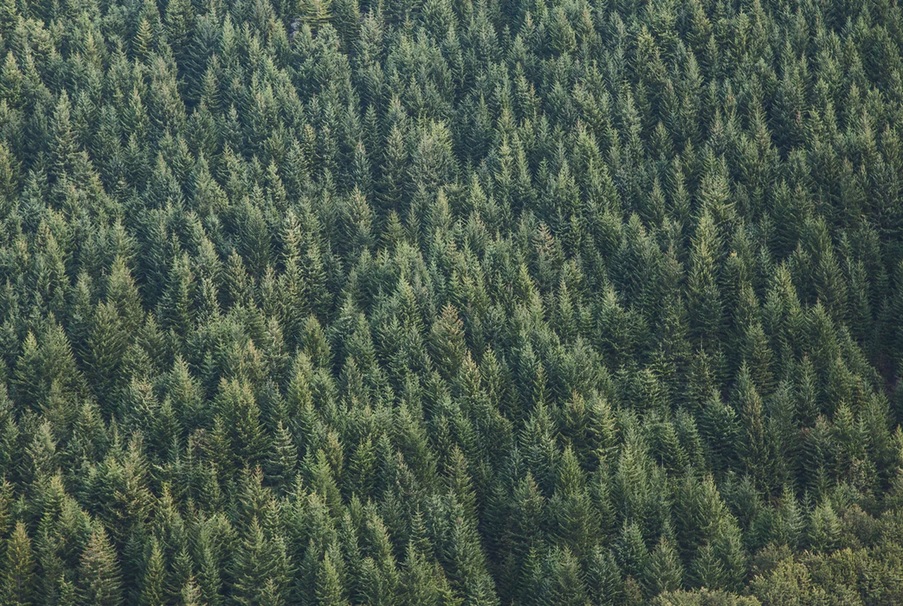
Managing Forests, Using Wood Products Deliver Sustained Climate Benefits
By American Forest Resource Council,
A new report by the Environmental Protection Agency (EPA) should question the narrative the United States is running out of old growth, and “protecting the last remaining” old growth is the only solution to combatting climate change.
Research suggests forests are aging and severe wildfires and tree mortality are decreasing their ability to sequester and store more carbon. The EPA’s findings are consistent with a 2023 US Department of Agriculture (USDA) Resources Planning Act Assessment report, which also found that carbon sequestration in U.S. forests is projected to decline before shifting to a net source of carbon emissions.
International climate scientists, including those on the Intergovernmental Panel on Climate Change (IPCC), say actively managing forests, using wood products, keeping forests as forests, and reforesting with young trees delivers the greatest climate and carbon mitigation benefit over time. Here’s why:
Aging forests, wildfires and other disturbances are impacting carbon sequestration…
Forests in the U.S. may be losing some of their edge as a bulwark against climate change, EPA’s latest greenhouse gas inventory suggests. In its annual report on greenhouse gases by sector, the agency said forests sequestered 787 million metric tons of carbon dioxide equivalent in 2022, down from 844.2 million metric tons the prior year and from 974 million in 1990. (Greenwire, 4/23/24)
“Due to an aging forest land base, increases in the frequency and severity of disturbances of forests in some regions, among other drivers of change, forest carbon density is increasing at a slower rate resulting in an overall decline in the sink strength of forest land remaining forest land in the United States,” EPA said in the report. (Greenwire, 4/23/24)
…and as a result, many western forests are converting from carbon sinks to carbon sources.
U.S. forests could worsen global warming instead of easing it because they are being destroyed by natural disasters and are losing their ability to absorb planet-warming gases as they get older, a new Agriculture Department report says. The report predicts that the ability of forests to absorb carbon will start plummeting after 2025 and that forests could emit up to 100 million metric tons of carbon a year as their emissions from decaying trees exceed their carbon absorption. Forests could become a “substantial carbon source” by 2070, the USDA report says. (Scientific American, 4/26/23)
Younger trees maximize forest carbon sequestration…
Thanks to their ability to absorb and store carbon dioxide from the atmosphere, forests have long been recognized as a key tool in the fight against climate change – but not all forests are equal. New research based on data from ESA’s SMOS satellite mission has found that, surprisingly, young trees are champions at carbon capture… the research, which was undertaken as part of ESA’s Climate Change Initiative RECCAP-2 project, found that young and middle-aged forests – comprising trees between 50 to 140 years of age – played a dominant role in absorbing atmospheric carbon and accumulating biomass. However, forests that were 140 years old and above were approximately carbon neutral, which is the opposite of vegetation model predictions. (European Space Agency, 5/10/23)
…and managing forests and storing carbon in wood maximizes carbon storage.
Forests of different ages play different roles in removing carbon from the atmosphere and storing it in wood. Old forests have accumulated more carbon than younger forests; however, young forests grow rapidly, removing much more CO2 each year from the atmosphere than an older forest covering the same area. Managing forests to avoid large emissions from the loss of old trees while rapidly removing CO2 from the atmosphere through young forest growth can provide both storage and sequestration benefits. In addition, managed forests produce wood products that store carbon long after the trees are harvested. These renewable products provide an added benefit when they are used in place of more energy-intensive products that require more fossil fuel emissions. (NCASI, 01/2021)

 IPCC: Sustainable forest management sequesters and stores more carbon in forests and wood products.
IPCC: Sustainable forest management sequesters and stores more carbon in forests and wood products.
“Sustainable forest management can maintain or enhance forest carbon stocks, and can maintain forest carbon sinks, including by transferring carbon to wood products, thus addressing the issue of sink saturation. Where wood carbon is transferred to harvested wood products, these can store carbon over the long-term and can substitute for emissions-intensive materials reducing emissions in other sectors.” (IPCC 2019 Special Report – page 21)
IPCC: Managed forests with sustained harvests provide the largest sustained climate mitigation benefit.
“In the long term, a sustainable forest management strategy aimed at maintaining or increasing forest carbon stocks, while producing an annual sustained yield of timber, fiber or energy from the forest, will generate the largest sustained mitigation benefit.” (IPCC’s 4th Assessment– page 543)
At the same time we are facing a wildfire crisis on federally-owned forestlands, there is a growing need for carbon-friendly wood products to help us decarbonize our homes, offices, schools, and other buildings. At last year’s COP28 conference in Dubai, the United States joined 16 other countries to announce support for substantially increasing the use of wood products in construction as a “vital decarbonization strategy.
By doubling or tripling sustainable forest management treatments on federal lands, as prescribed by the Forest Service’s own 10-year wildfire crisis strategy, we can meet the demand for wood products, increase carbon sequestration and storage, and meet global climate objectives outlined by the IPCC.
Disclaimer: Articles featured on Oregon Report are the creation, responsibility and opinion of the authoring individual or organization which is featured at the top of every article.

